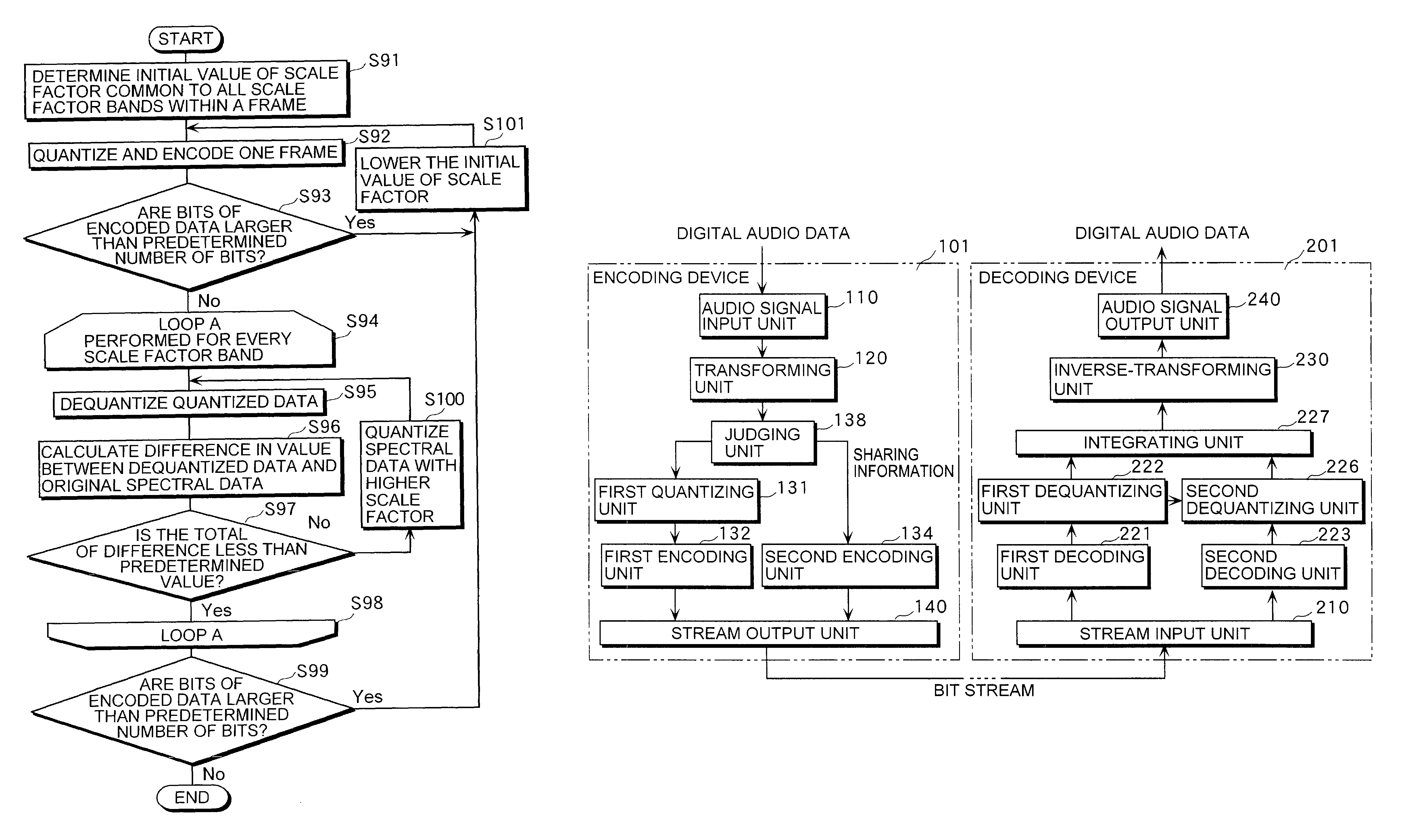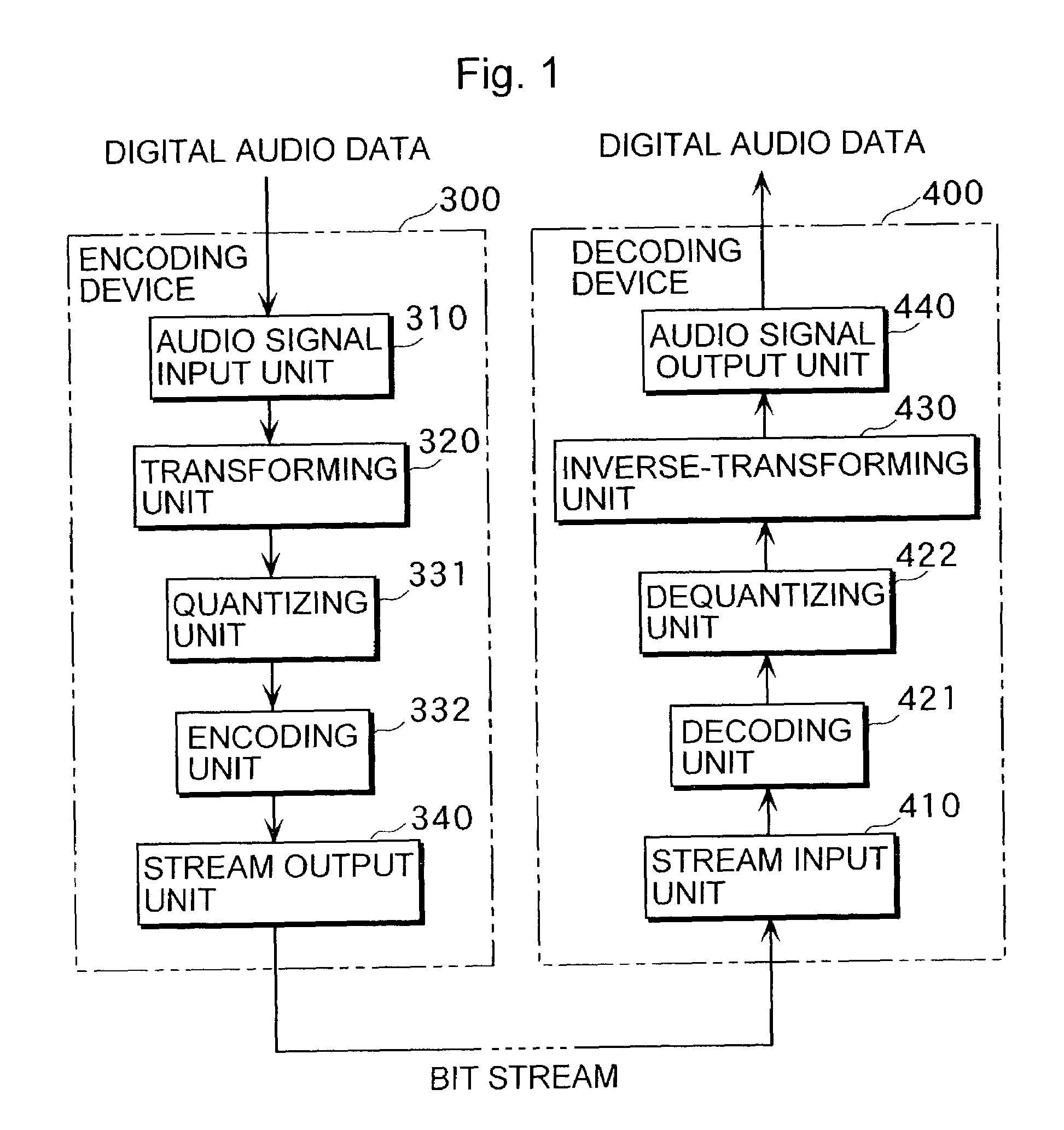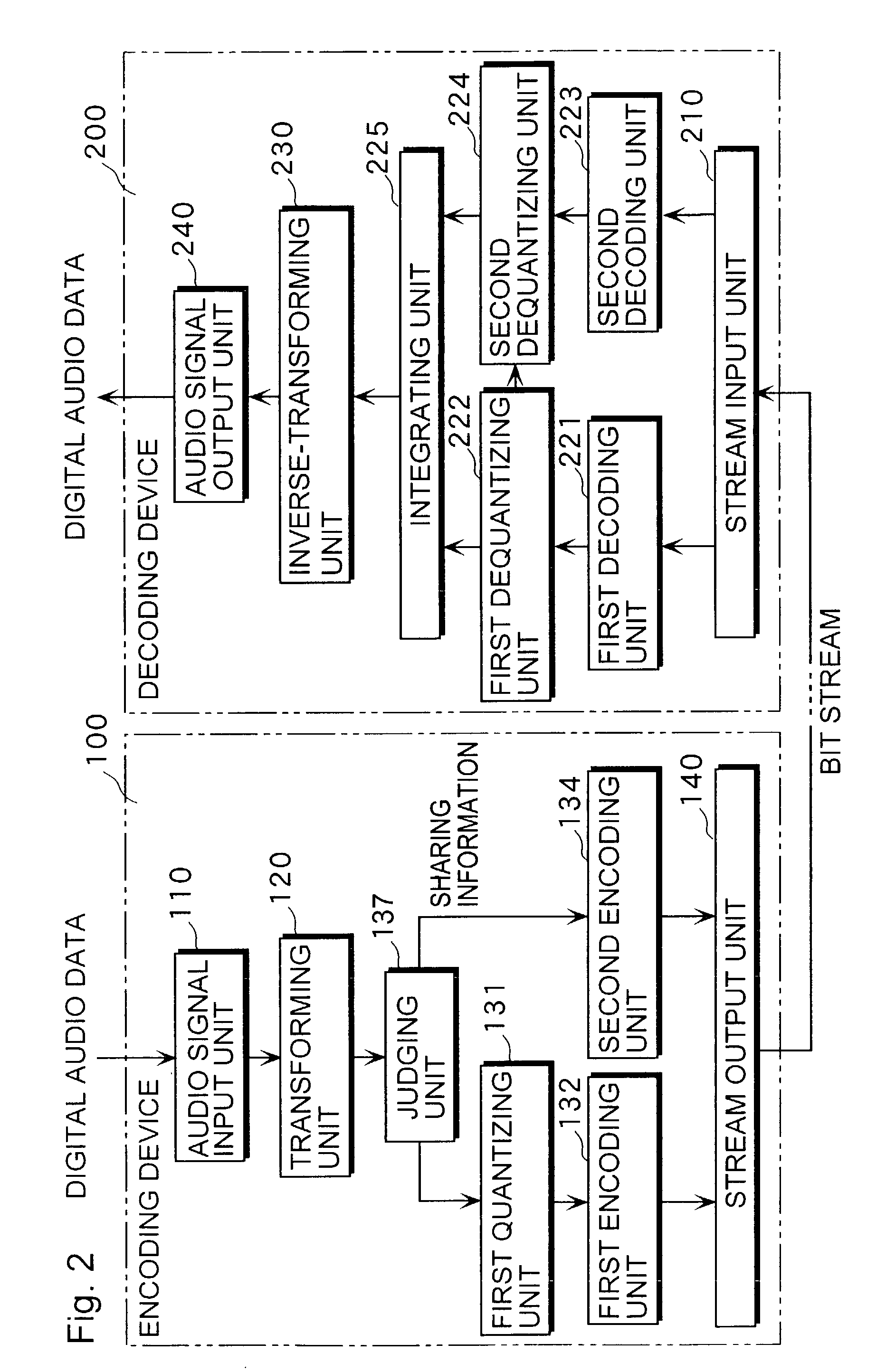Encoding device and decoding device
a technology of encoding device and decoding device, which is applied in the field of encoding and decoding digital audio data, can solve the problems of affecting the number of values, affecting the amount of data for transmission, and it is not realistic to transmit as many as 1,024 samples of spectral data via a low-rate transmission channel of, for instance, a portable phon
- Summary
- Abstract
- Description
- Claims
- Application Information
AI Technical Summary
Benefits of technology
Problems solved by technology
Method used
Image
Examples
first embodiment
[0051]The following specifically describes an encoding device 100 and a decoding device 200 as embodiments of the present invention. FIG. 2 is a block diagram showing constructions of the encoding device 100 and the decoding device 200.
Encoding Device 100
[0052]This encoding device 100 effectively reduces the bit amount of an encoded audio bit stream before transmitting it. When the present encoding device 100 and a conventional encoding device produce encoded audio bit streams of the same amount of bits, an audio bit stream produced by the preset encoding device 100 can be reconstructed by the decoding device 200 as an audio signal at higher quality than an audio bit stream produced by the conventional encoding device. More specifically, the encoding device 100 reduces the bit amount of the encoded audio bit stream as follows. For short blocks, the encoding device 100 transmits eight blocks (i.e., windows) collectively with each window composed of 128 samples. When different sets of...
second embodiment
[0137]The following describes an encoding device 101 and a decoding device 201 of the second embodiment with reference to FIGS. 12 and 13 while focusing on features that are different from the first embodiment. FIG. 12 is a block diagram showing constructions of the encoding device 101 and the decoding device 201.
Encoding Device 101
[0138]When short blocks are used as MDCT block length, the encoding device 101 specifies two or more windows that include sets of spectral data that are similar to one another. The encoding device 101 then has a set of spectral data within one of the specified windows represent other sets of spectral data within other specified windows. In the present embodiment, a set of spectral data represents other sets of spectral data in a full frequency range. The encoding device 101 thus reduces the bit amount of the encoded audio bit stream. The encoding device 101 includes an audio signal input unit 110, a transforming unit 120, a first quantizing unit 131, a fi...
third embodiment
[0158]The following describes an encoding device 102 and a decoding device 202 of the third embodiment with reference to FIGS. 14˜17 with focus on features of the present embodiment that are different from the first embodiment. FIG. 14 is a block diagram showing constructions of the encoding device 102 and the decoding device 202.
Encoding Device 102
[0159]This encoding device 102 reconstructs spectral data, from which quantized data of the value “0” is generated, because this spectral data is adjacent to spectral data that has the highest absolute value. Spectral data processed by the encoding device 102 is based on long blocks. The reconstructed spectral data is then represented by data of a smaller bit amount to be transmitted to the decoding device 202. The encoding device 102 comprises an audio signal input unit 111, a transforming unit 121, a first quantizing unit 151, a first encoding unit 152, a second quantizing unit 153, a second encoding unit 154, and a stream output unit 1...
PUM
 Login to View More
Login to View More Abstract
Description
Claims
Application Information
 Login to View More
Login to View More - R&D
- Intellectual Property
- Life Sciences
- Materials
- Tech Scout
- Unparalleled Data Quality
- Higher Quality Content
- 60% Fewer Hallucinations
Browse by: Latest US Patents, China's latest patents, Technical Efficacy Thesaurus, Application Domain, Technology Topic, Popular Technical Reports.
© 2025 PatSnap. All rights reserved.Legal|Privacy policy|Modern Slavery Act Transparency Statement|Sitemap|About US| Contact US: help@patsnap.com



